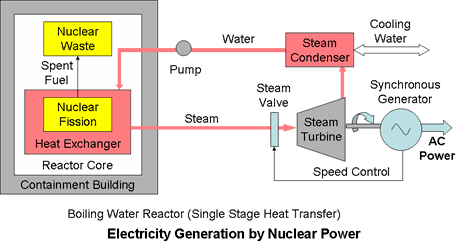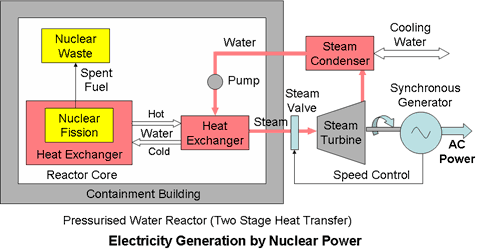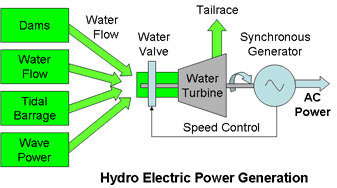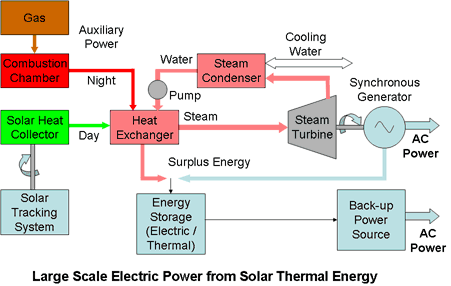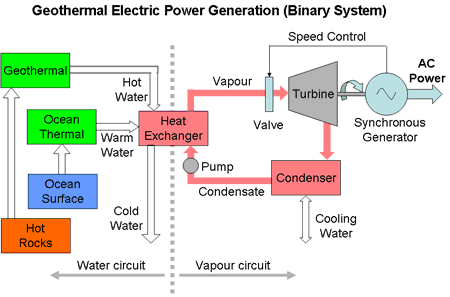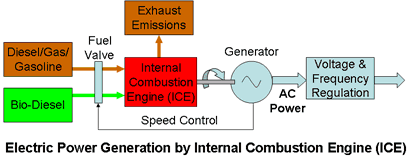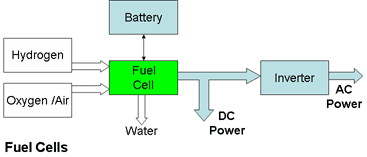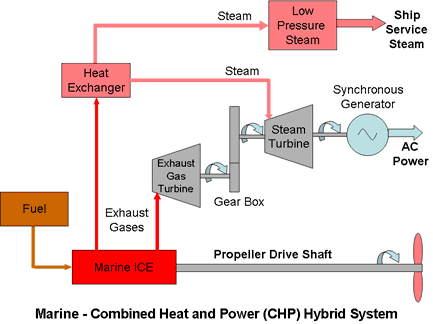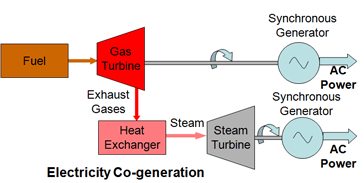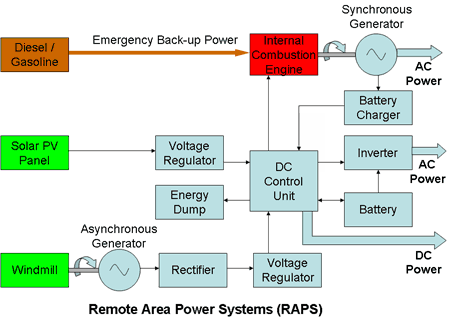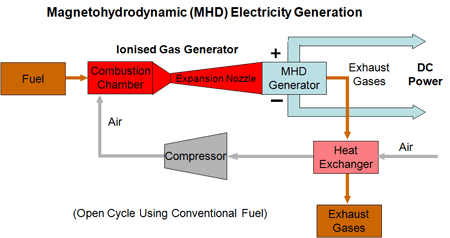Battery and Energy Technologies |
 |
|
Conventional and Sustainable Electrical Energy SupplyOverview Characteristics and Comparisons
Primary Electrical Energy SourcesEnergy is available from many sources however most of the energy used to satisfy the world's ever increasing demand for electricity is still derived from fossil fuels. The dependency on fossil fuels brings with it two problems.
The section on Energy Resources shows the many alternative energy sources which can be used to generate electricity together with their associated energy content and indicates the actual usage of these resources. This page summarises the different ways in which the resources can be used to generate electricity.
Turning Energy Resources into Usable Electric PowerMost electricity is generated using rotating machines to drive a generator but there are many other possibilities. Information on the associated rotary generators can be found on the Generators page. The diagrams below show 29 basic ways of generating electrical energy but there are numerous variants on each of these methods. The key indicates the technologies involved.
Click on the diagrams below for descriptions of the power generation possibilities, processes and performance.
Electricity SupplyVarious estimates of the world annual electricity generation have been made. Some numbers for 2004 are shown here
These estimates only show the consumption or generation of electrical energy. They do not show how much energy was consumed in generating the electricity or where it came from, nor do they show the energy consumed which is not converted to electricity such as that used for transportation or heating. These pages hopefully will provide some of the answers.
Eighty two percent of the world's electricity is generated using steam turbine systems. In simple terms, a boiler is used to raise steam which drives a steam turbine, also known as the prime mover, and the steam turbine in turn drives an electrical generator. Steam to drive these turbines is raised by burning fossil fuels (66%) or by nuclear power (16%). The balance of electric power is generated by hydro systems (17%) with solar, wind and biomass making up less than 2% of the total. Source - US Energy Information Administration (EIA) (2003)
The steam turbine generating plants used to supply the grid's base load are viable only as large scale installations requiring special precautions because of their large physical size and the high voltages and currents involved. Smaller scale systems use a variety of alternative generation schemes which can also be tailored for domestic use. Paradoxically, small scale electricity generating plant can be more complex than the high power plant supplying the base load to the national grid. This is explored in more detail in the section on small scale installations.
Except for hydro and nuclear power, generating plants are mostly located near to where the energy is needed in order to minimise distribution losses.
See also Energy Efficiency and Electricity Demand
See also Generators and Energy Storage
|
|||||||||||||||||||||||||||||||||||||||||||||||||||||||||||||||||||
![]() Print This Page || Home || FAQ || Site Map || Legal || Privacy Promise || Contacts
Print This Page || Home || FAQ || Site Map || Legal || Privacy Promise || Contacts
Woodbank Communications Ltd, South Crescent Road, Chester, CH4 7AU, (United Kingdom)
Copyright © Woodbank Communications Ltd 2005




